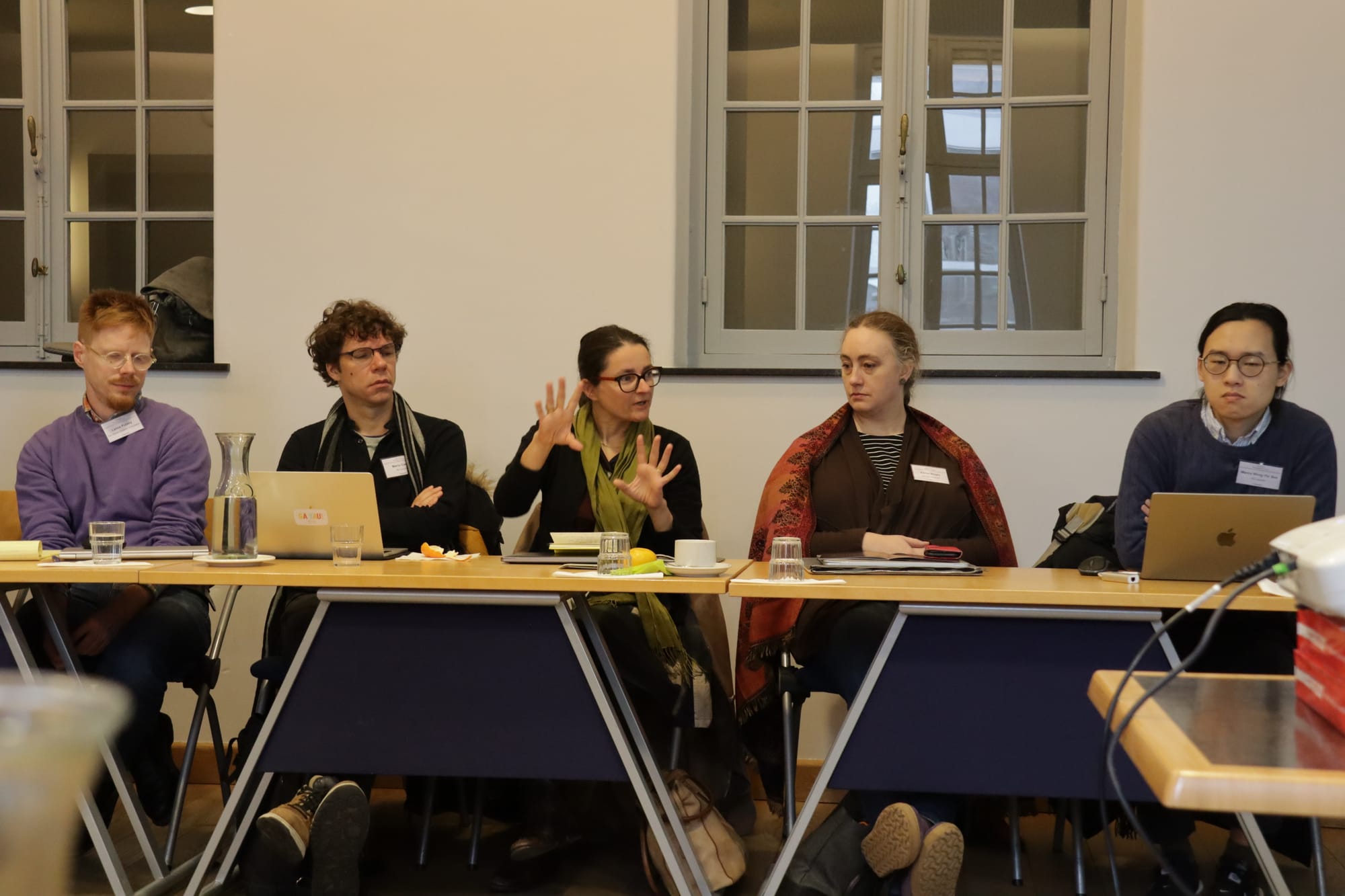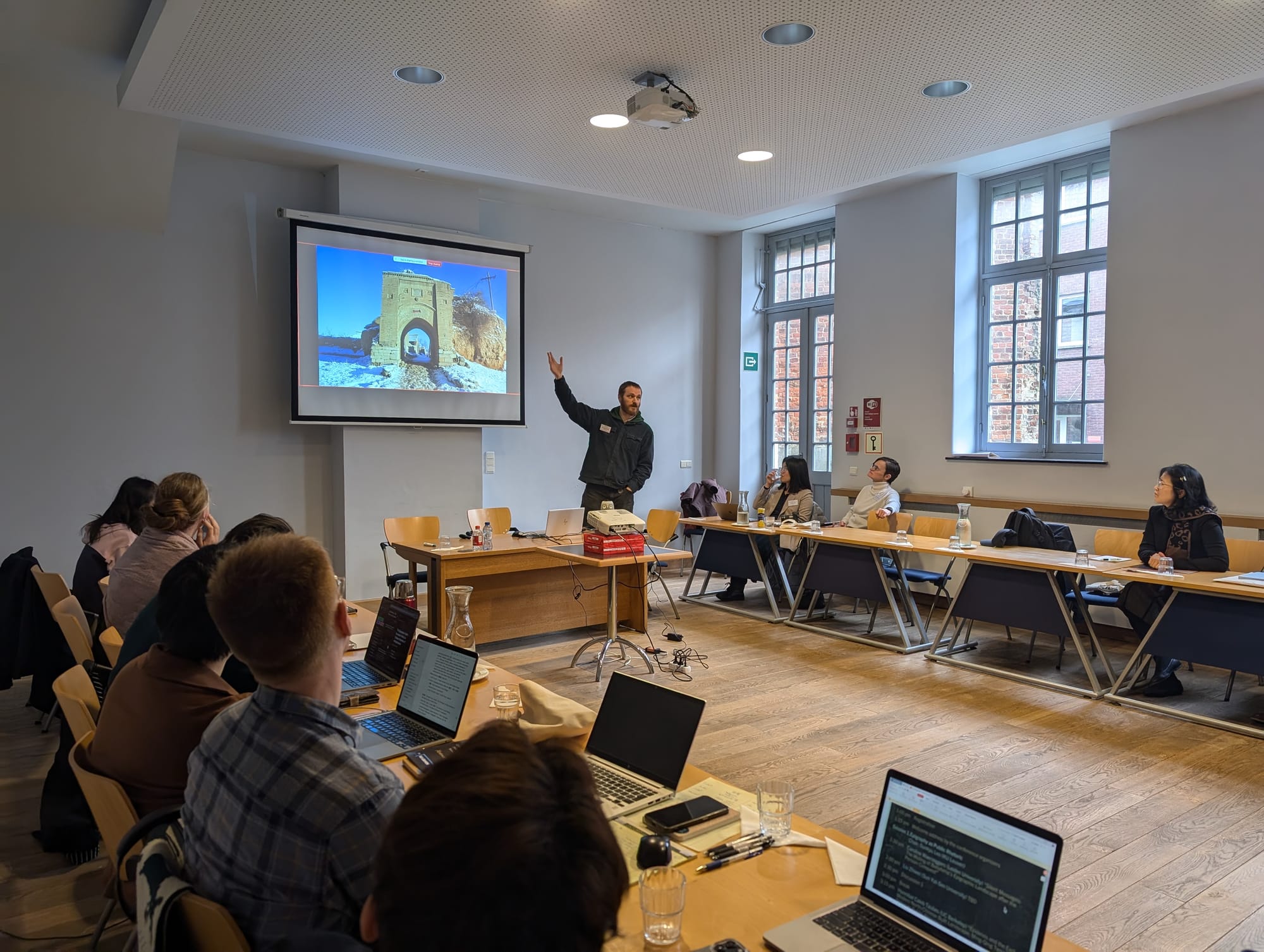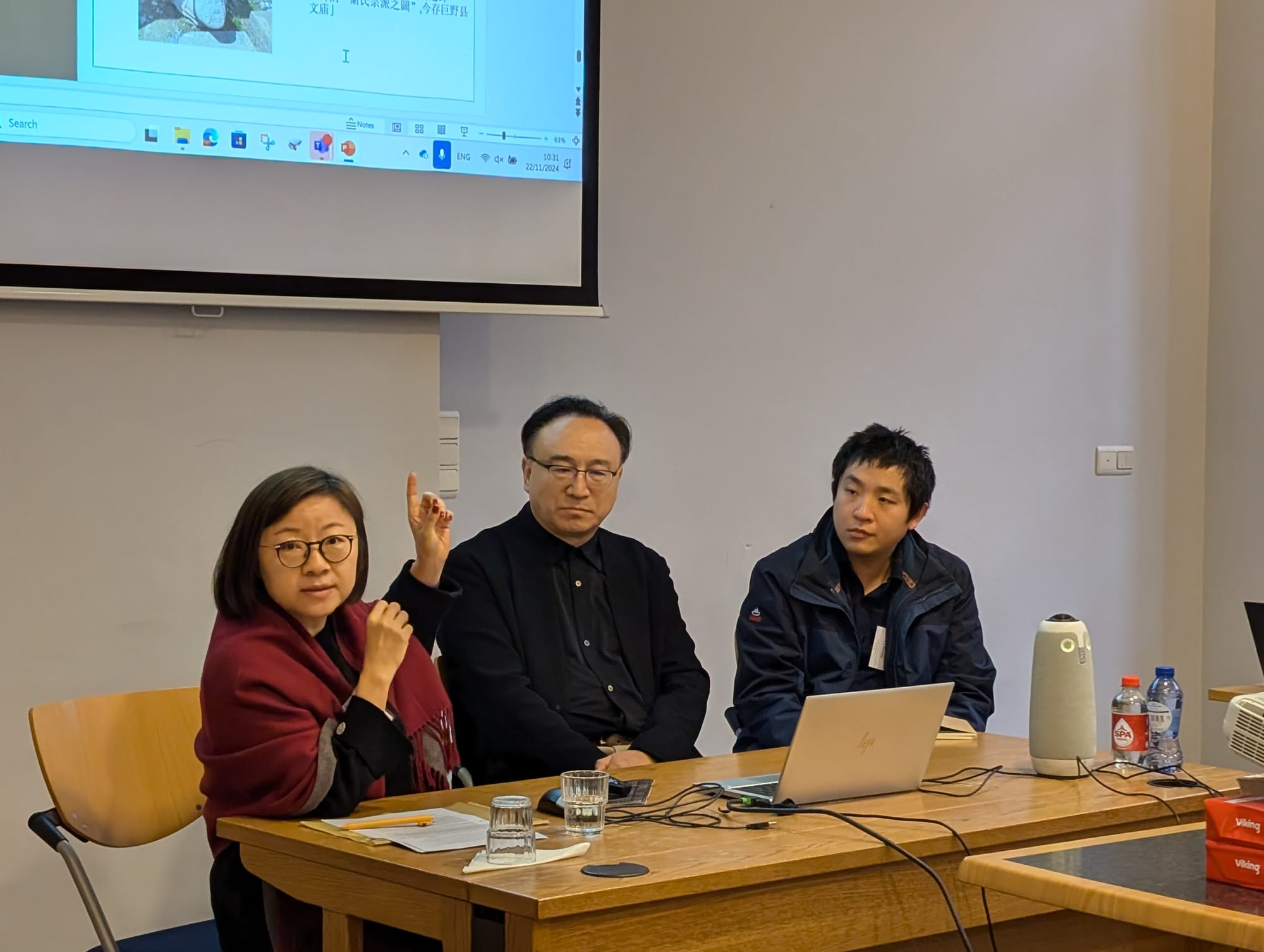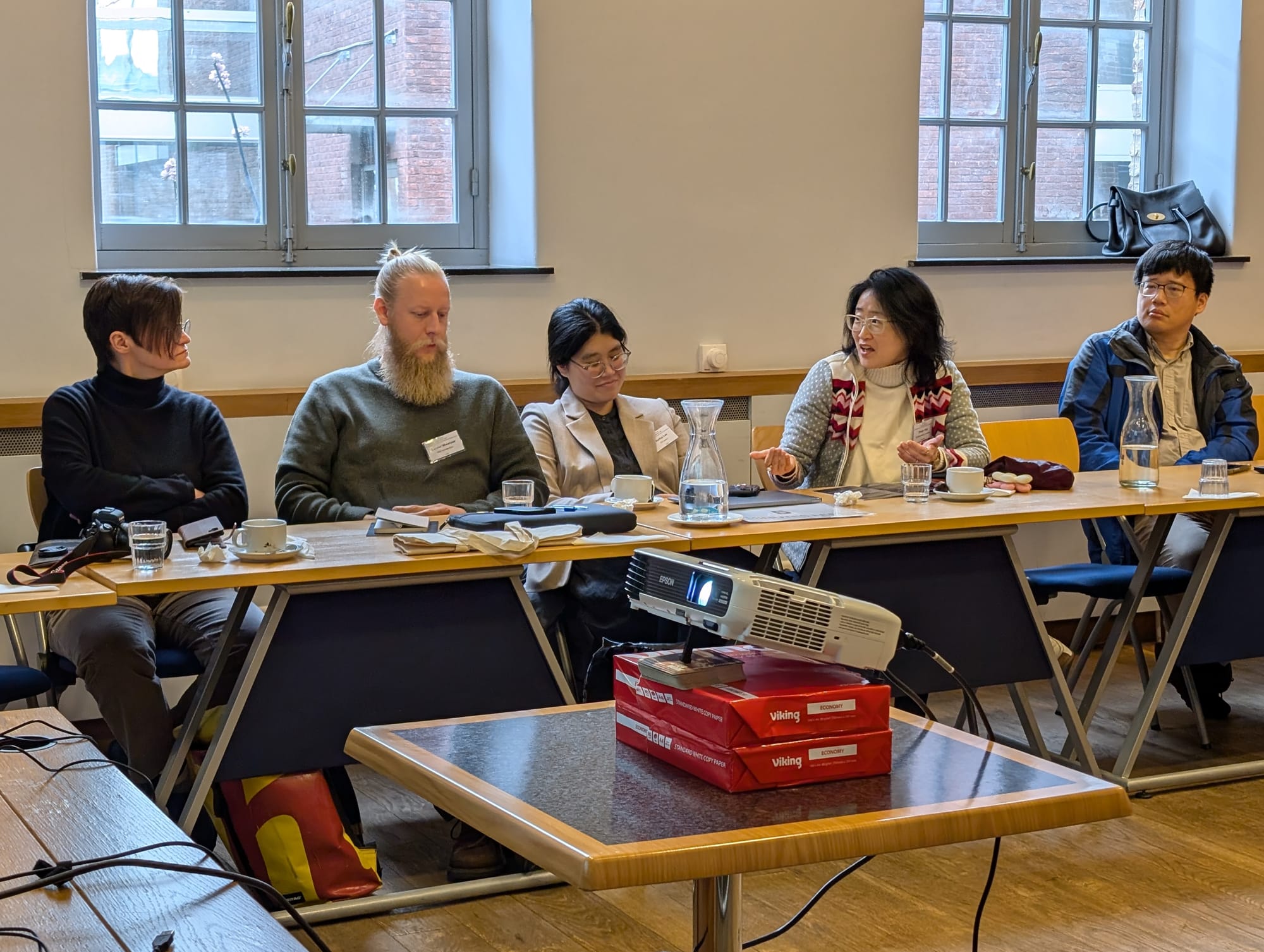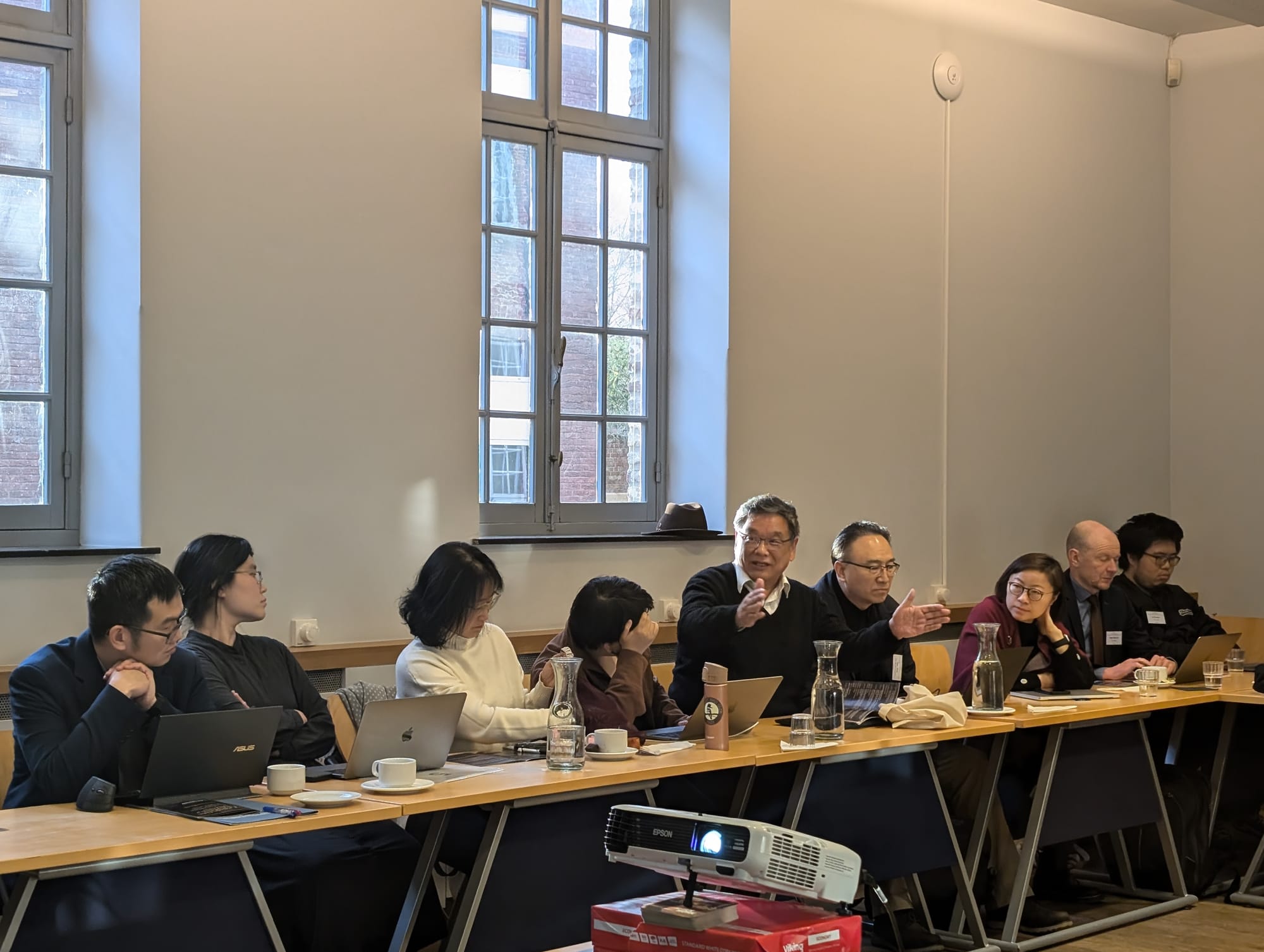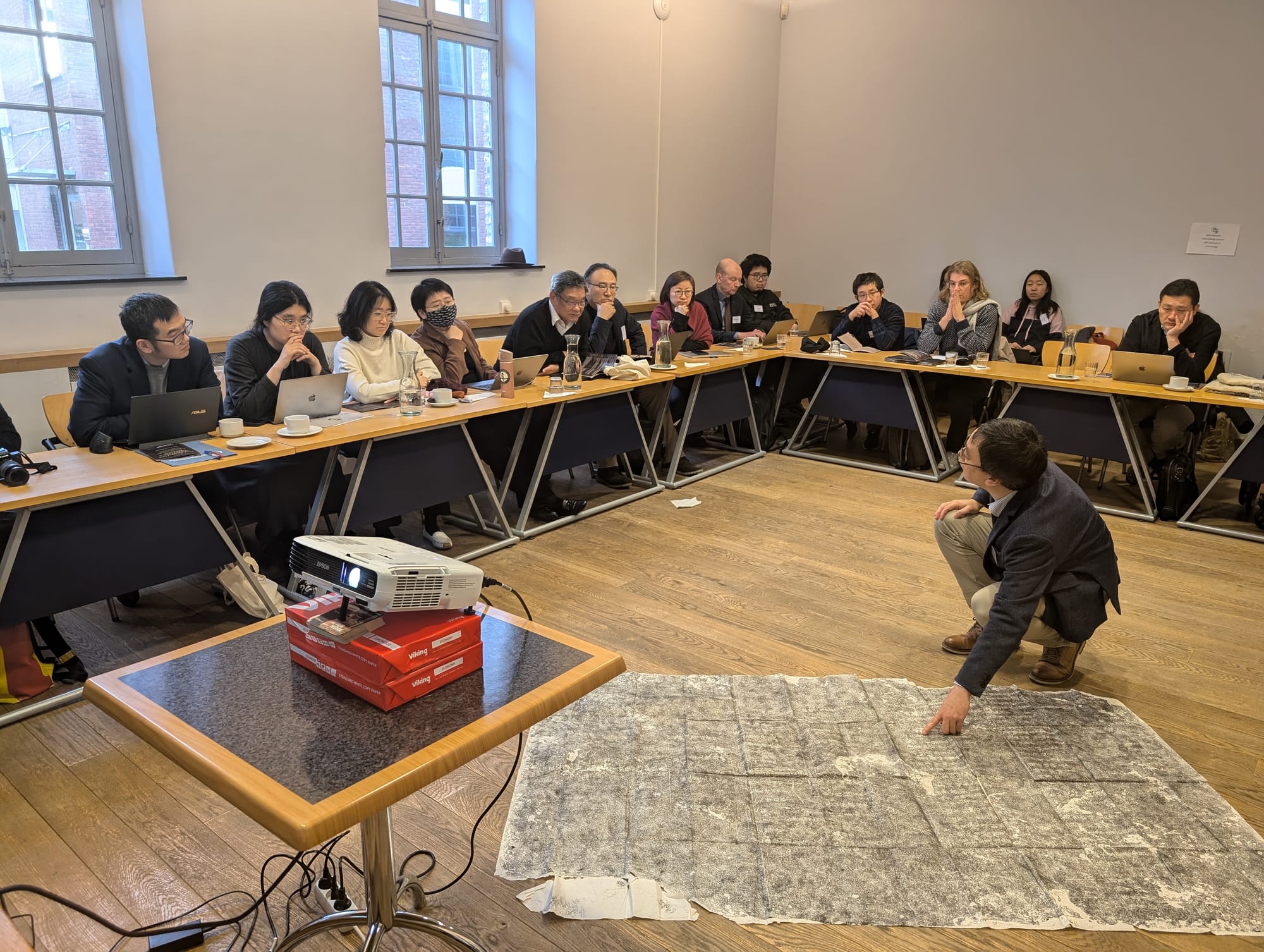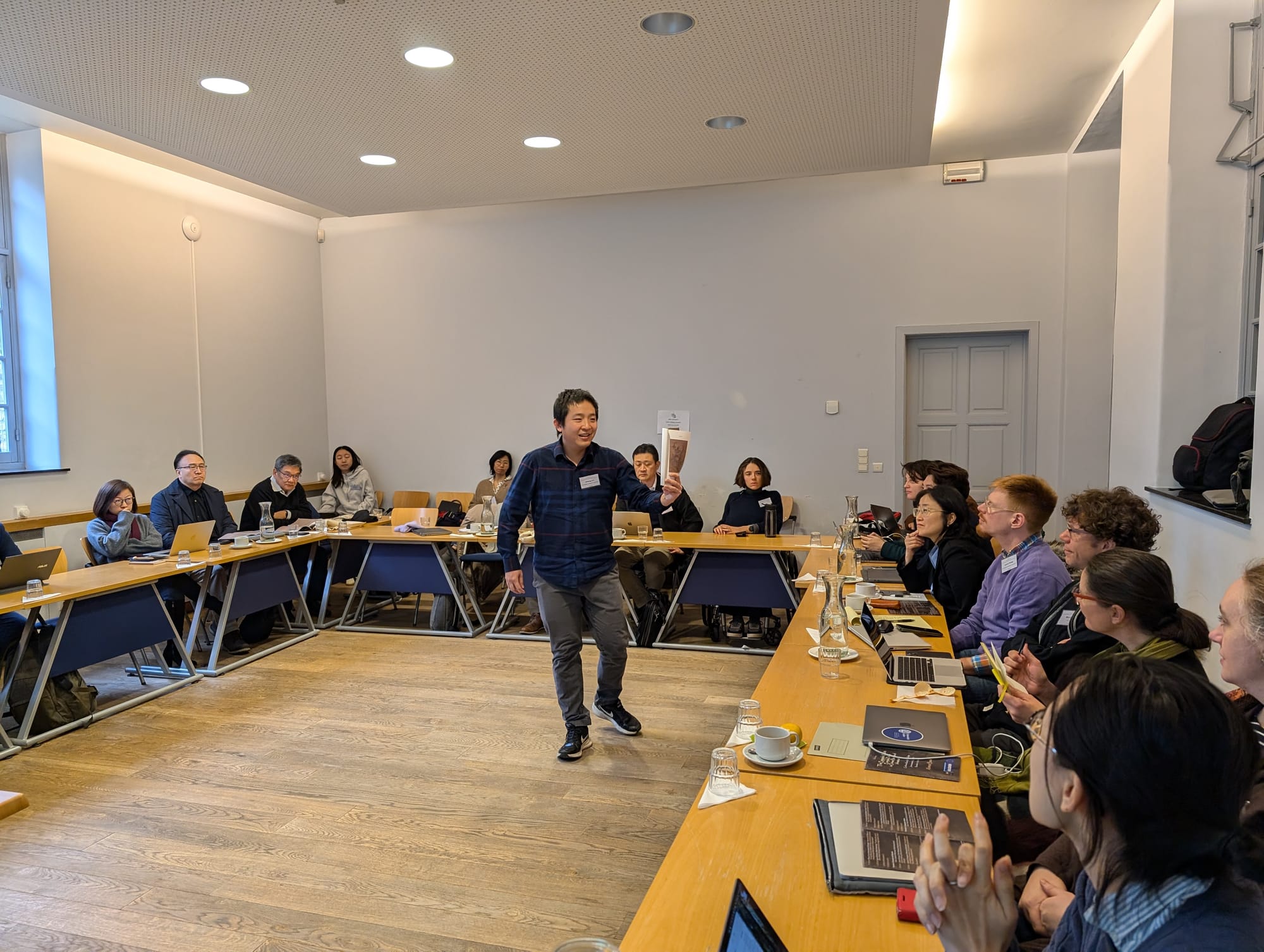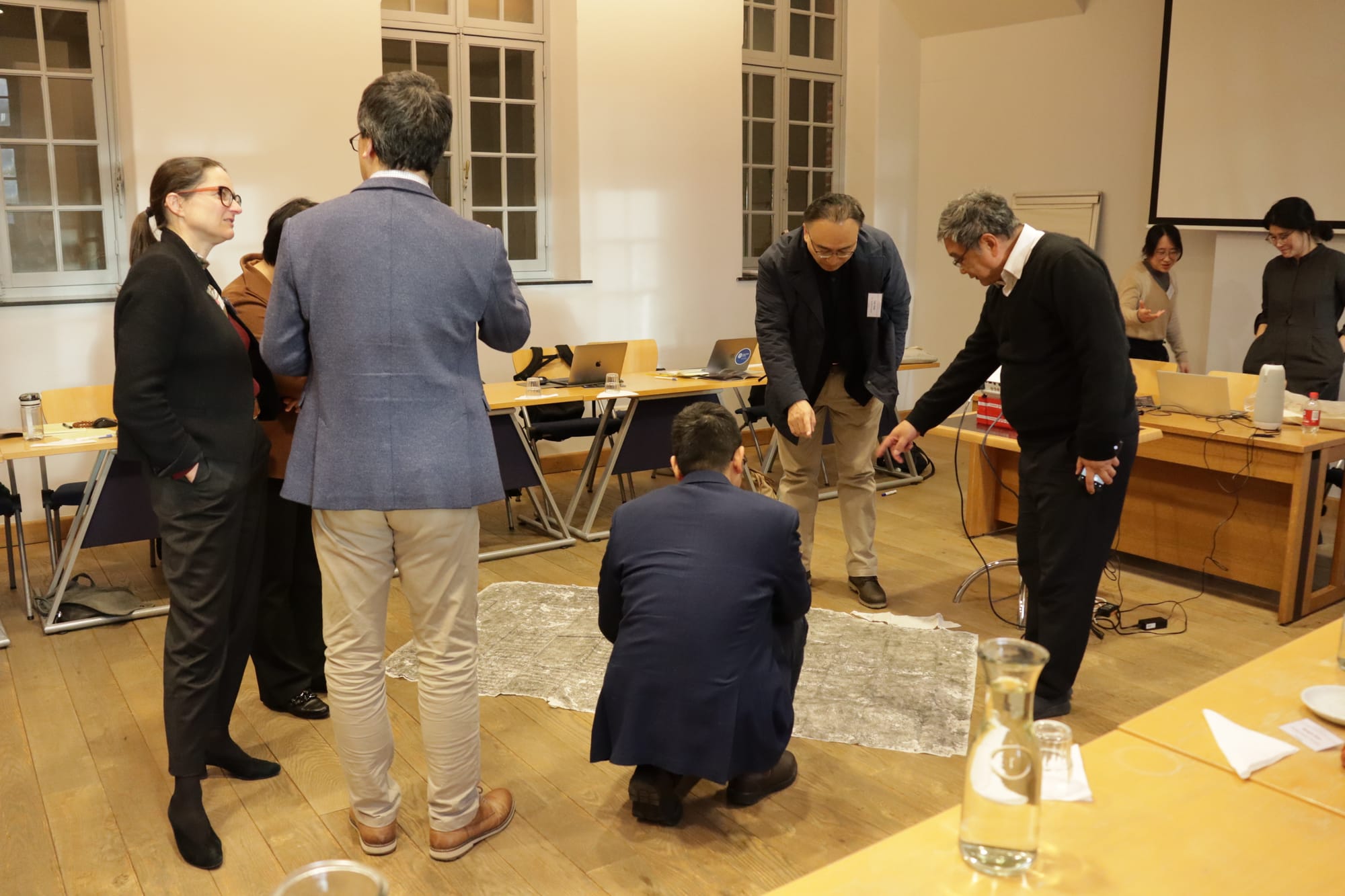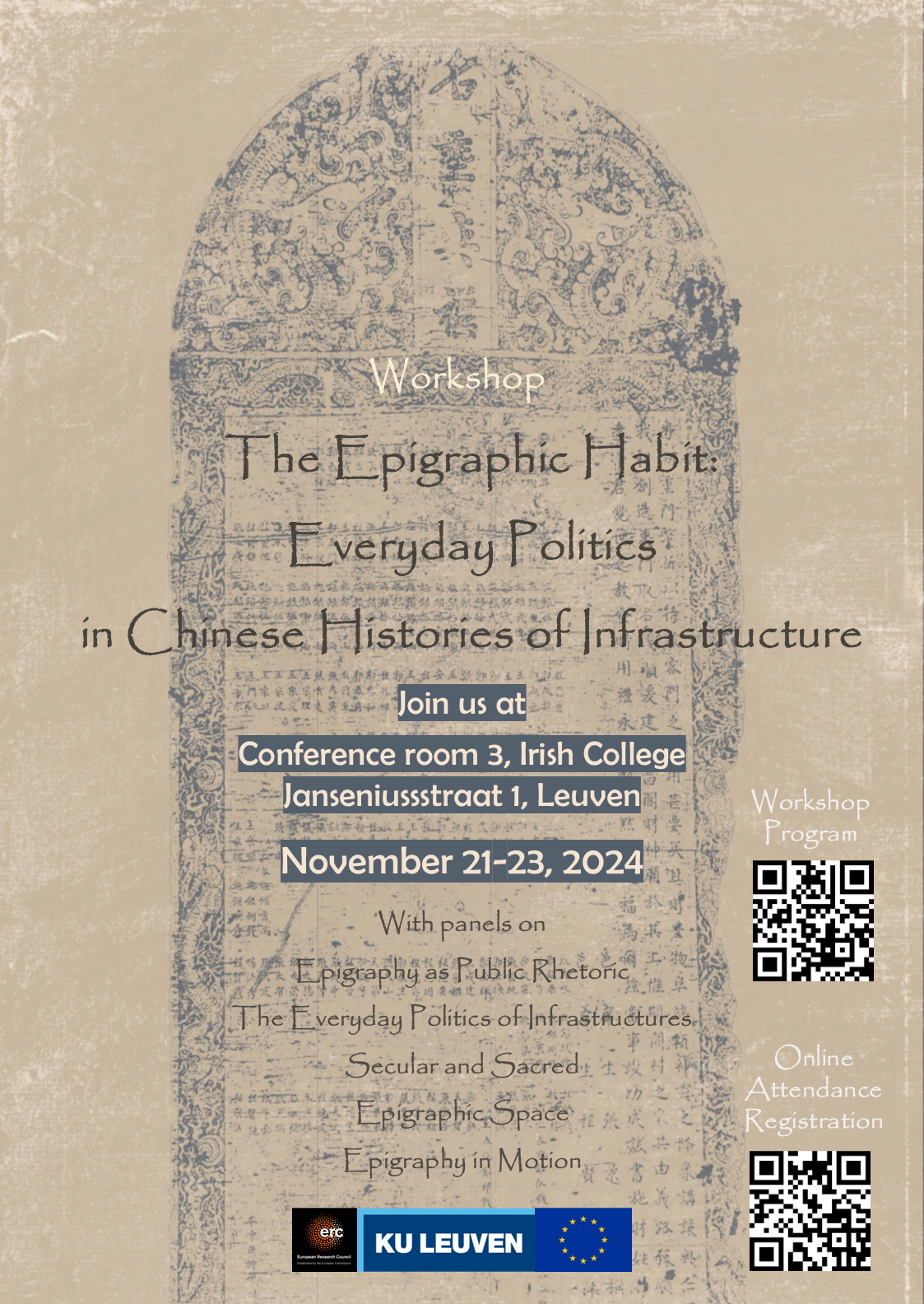
Organized by the ERC-research project 'Regionalizing Infrastructures in Chinese History' (KU Leuven, Belgium)
Date: November 21-23, 2024
Organizers: Sunkyu Lee, Hilde De Weerdt, Marco Wing-Yin See, Dawn Lizao Zhuang
Location: Leuven, Belgium (Register to receive the online event link)
The international workshop "The Epigraphic Habit: Everyday Politics in Chinese Histories of Infrastructure," organized by the ERC project Regionalizing Infrastructures in Chinese History was held at the Irish College in Leuven from November 21 to 23, 2024. Bringing together experts in history, historical anthropology, art history, archaeology and epigraphy, and religious studies, the workshop explored the use of epigraphic sources in comparative and transregional histories of infrastructure.
The program was opened with introductory remarks by Hilde DE WEERDT (KU Leuven), the PI of the Reginfra project, followed by five thematic panels addressing the interplay between epigraphy and infrastructure, the spatial and cultural landscapes of inscriptions, and the media and circulation of epigraphic practices.
The first panel, "Epigraphy as Public Rhetoric," explored how inscriptions have functioned as powerful tools of communication, shaping public memory and identity across various landscapes from throughout history. The presentations by Hannibal Caleb TAUBES (UC Berkeley) and LIU Zhiwei (Sun Yat-Sen University) highlighted the role of steles and stone in defining public space, social relations, and local identities in early modern Chinese history. TAUBES examined how Ming and Qing stele inscriptions were tied to self-organized associations (hui), which financed public buildings and commissioned inscriptions to legitimize these acts. LIU presented fieldwork on rural South China, highlighting that both stone worship and ritual buildings served to construct and share belief systems within local communities. He also demonstrated how these practices evolved, with later inscriptions reflecting the Confucian narrative. Caroline WAERZEGGERS (Leiden University) and CHEN Ruilin (Peking University) emphasized how stele inscriptions, whether through silence or ongoing documentation, played a crucial role in shaping public memory. WAERZEGGERS highlighted how the silence of Babylonian inscriptions after the Persian conquest symbolized a shift in political and memory control, while CHEN examined how inscriptions in Chinese gazetteers continued traditions of local documentation, reflecting the rise of local authority and social cohesion.
The second panel, "The Everyday Politics of Infrastructures," explored the relationship between infrastructure and local governance in late imperial China, focusing on how material and symbolic infrastructures shaped social relationships and mediation. CAO Jiaqi (Sun Yat-Sen University) focused on the repair and maintenance of the Shu Road during the Song Dynasty, emphasizing how infrastructure projects were integrated into everyday governance through collaboration among various levels of local officialdom. WANG Jinping (National University of Singapore) examined Quanzhen Daoist genealogical steles erected during Mongol rule in northern China, analyzing their role in recording Daoist lineages and asserting genealogical claims, with a particular focus on the materiality of the stele as a medium. WANG You (University of Chicago) and IGURO Shinobu (Otani University) discussed how inscriptions engaged in water governance and challenged state-centric narratives. WANG studied Taiping River records, highlighting community-led infrastructure maintenance evidenced from the evolving “hidden archives” in Qing Jiangnan. By questioning the meaning of re-carving, IGURO examined how the act of augmenting or recarving stelae played a pivotal role in the revival and regeneration of the traditions surrounding the use and management of the Hot Spring Water.
The third panel "Secular and Sacred" focused on how inscriptions on monuments, cemeteries, and sacred sites mediated the interplay of religious and political authority. Lance PURSEY (The Hebrew University of Jerusalem) examined Liao-era Buddhist inscriptions, revealing how steles commemorating temples and other structures reflected the contributions of diverse social actors. IIYAMA Tomoyasu (Waseda University) analyzed the evolution of genealogical steles in northern Chinese cemeteries during the Yuan, Ming, and Qing periods, highlighting their role in negotiating land rights and kinship dynamics. Eloise WRIGHT (Ashoka University) and Xi DUAN (Ghent University) delved into inscriptions from Buddhist sites in Yunnan. WRIGHT studied steles around Jizu Mountain, showing how secular infrastructure shaped and supported its rise as a pilgrimage center. DUAN examined stele records from Dengjue Temple, revealing the intertwined roles of local chieftains, imperial policies, and religious networks in the temple’s history.
The fourth panel, "Epigraphic Space," explored the role of epigraphy across physical and digital spaces, combining historical, social, and technological perspectives. Lia WEI (INALCO) and Manuel SASSMANN (Heidelberg Academy of Sciences and Humanities) examined Daoist and Buddhist cliff inscriptions in Shandong, emphasizing their significance in shaping sacred geography and exploring the impact of modern digital approaches in reinterpreting these historical artifacts. LIU Jialong (Università di Napoli L'Orientale) investigated Tang public inscriptions, revealing shifts in spatial and temporal patterns, particularly the southward movement of epigraphic activity after the An Lushan Rebellion. RegInfra team members (Hilde De Weerdt, Sunkyu Lee, Marco Wing-Yin See, Xi Wangzhi, and Dawn Lizao Zhuang (KU Leuven)) jointly presented a comparative analysis of the distribution of social categories across stele and gazetteer inscriptions. This analysis is based on an automated annotation process derived from the annotation of selected gazetteer inscriptions. Panel Chair Mark DEPAUW (KU Leuven) showcased his work in designing and developing the Trismegistos database for research on Graeco-Roman Egyptian epigraphy, underscoring the transformative potential of digital tools in epigraphic studies.
The fifth panel "Epigraphy in Motion" explored the movement of inscription across media. By integrating a relational database and pattern recognition AI techniques Julie VERLINDEN (Ghent University) investigated whether the decorative similarities observed in Roman Imperial architecture correlate with other forms of connectivity among the cities in Asia Minor and their elites. Mario CAMS (KU Leuven) discussed a Ming-era engraved map stele, tracing the iterations of its rubbings across various media, including paper, silk, printed atlases, and fans, and highlighting the broad circulation of epigraphic content. Soojin KIM (Sungkyunkwan University) focused on the transformation of Joseon Korea’s commemorative steles into portable embroidered parasols, showing the evolution of commemorative practices and the spread of epigraphic texts through mobile and versatile media. A shared theme among these studies was the fluidity of inscriptions across physical and conceptual spaces, demonstrating the dynamic nature of epigraphy in fostering connections across diverse genres, cultures and social contexts.
The workshop concluded with a roundtable discussion in which participants exchanged insights, reflected on shared challenges and questions, and identified opportunities for broader interdisciplinary collaboration. The diverse range of topics and approaches presented throughout the workshop demonstrated how inscriptions served as essential tools for local governance, such as recording infrastructure maintenance, water management, and genealogical claims, while also functioning as media for constructing public memory, religious identity, and community. By questioning the conventional divisions regarding epigraphic habits such as north vs. south, central vs. peripheral, stable vs. mobile, and textual vs. multi-medial, and by bridging methods ranging from fieldwork and close reading to databases and machine learning, the workshop provided an in-depth exploration of inscriptions as dynamic sources. The discussions in the workshop also highlighted inscriptions as a valuable source for understanding how infrastructure projects were managed, how power dynamics were negotiated, and how cultural identities were shaped and reshaped in different historical contexts.
